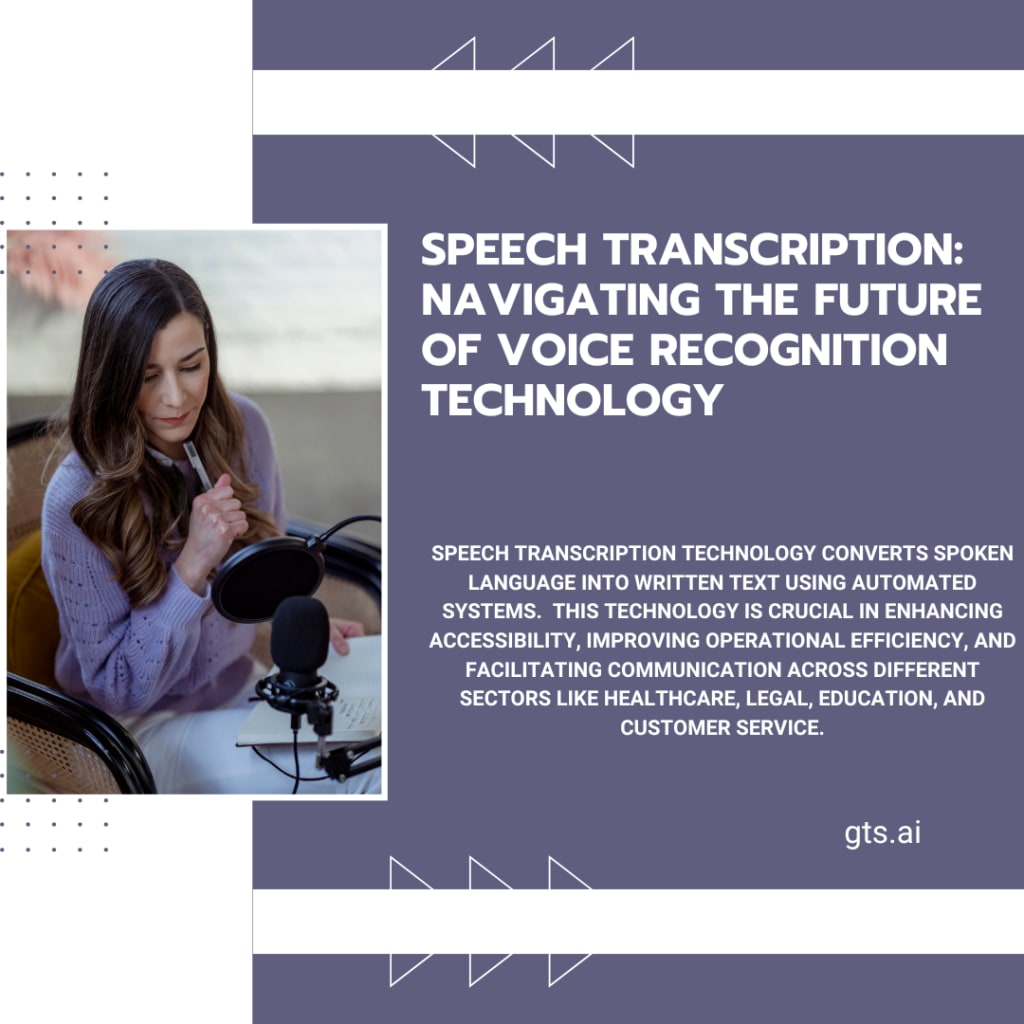Role of Speech Transcription in Market Research and Data Analysis
Benefits of Speech Transcription

Introduction:
In the fast-changing world of market research and data analysis, one essential tool often not given enough attention is speech transcription. It's becoming increasingly vital for businesses aiming to grasp consumer behavior, market trends, and competition. Converting spoken words into written text enables thorough analysis and smarter decision-making.
Key Benefits of Speech Transcription in Market Research and Data Analysis:
1. Enhancing Data Collection Methodologies
Broadened Research Scope: Speech transcription allows researchers to capture and analyze data from a wider range of sources, including interviews, focus groups, and customer service calls.
Improved Accuracy: Transcribed speech provides a verbatim record of conversations, reducing the risk of misinterpretation or missed information during manual note-taking.
Increased Efficiency: Researchers can conduct more interviews or focus groups in a given time frame, as the burden of real-time note-taking is alleviated.
2. Facilitating Qualitative Data Analysis
Easier Content Analysis: Transcribed text can be easily searched, coded, and categorized using qualitative data analysis software, streamlining the process of identifying themes and patterns.
Enhanced Collaboration: Team members can easily share and review transcribed data, fostering collaborative analysis and interpretation.
Improved Audit Trail: Transcriptions provide a clear record of raw data, enhancing the transparency and reproducibility of research findings.
3. Enabling Advanced Text Analytics
Sentiment Analysis: Transcribed speech can be processed using natural language processing (NLP) tools to gauge sentiment, emotions, and attitudes expressed by participants.
Topic Modeling: Automated algorithms can identify recurring themes and topics within large volumes of transcribed text, revealing insights that might be missed through manual analysis.
Language Pattern Recognition: Analysis of transcribed speech can uncover linguistic patterns, jargon usage, and communication styles specific to different demographic groups or market segments.
4. Enhancing Customer Experience Analysis
Voice of the Customer (VoC) Programs: Transcribed customer interactions provide rich data for VoC initiatives, allowing businesses to identify pain points, preferences, and areas for improvement.
Customer Journey Mapping: Analysis of transcribed customer service calls and interviews can provide insights into the customer journey, helping businesses optimize touchpoints and experiences.
Feedback Loop Optimization: Transcribed customer feedback can be quickly analyzed and acted upon, enabling businesses to close the feedback loop more efficiently.
5. Supporting Market Trend Identification
Early Detection of Emerging Trends: Analysis of transcribed conversations from industry events, expert interviews, and social media can help identify emerging trends before they become mainstream.
Competitor Intelligence: Transcribed speeches, interviews, or earnings calls from competitors can provide valuable insights into their strategies, products, and market positioning.
Consumer Behavior Insights: Analysis of transcribed focus groups or in-depth interviews can reveal subtle shifts in consumer attitudes, preferences, and behaviors.
6. Improving Data Accessibility and Searchability
Keyword Searchability: Transcribed text allows for easy keyword searches across large volumes of data, enabling researchers to quickly locate relevant information.
Cross-Reference Capabilities: Researchers can easily cross-reference information from different sources, enhancing the depth and breadth of analysis.
Data Archiving: Transcribed speech provides a searchable and easily stored record of valuable market research data for future reference and longitudinal studies.
7. Enhancing Multilingual and Cross-Cultural Research
Language Translation: Transcribed speech can be more easily and accurately translated into multiple languages, facilitating global market research efforts.
Cultural Nuance Analysis: Detailed transcriptions allow researchers to analyze cultural nuances, idioms, and context that might be lost in summarized notes.
Consistency in Multilingual Studies: Transcription ensures consistency in data collection and analysis across different language markets.
8. Supporting Compliance and Legal Requirements
Audit Trails: Transcribed interviews and focus groups provide a clear audit trail for regulatory compliance in industries such as healthcare or finance.
Legal Protection: Accurate transcriptions can serve as legal documentation in cases of disputes or compliance issues.
Ethical Research Practices: Transcriptions support ethical research practices by providing a transparent record of participant responses and consent.
9. Enabling Longitudinal Studies and Trend Analysis
Historical Data Comparison: Transcribed data from past studies can be easily compared with current research, enabling trend analysis over time.
Consistency in Long-term Research: Using transcription ensures consistency in data collection methods across different time periods and research teams.
Pattern Recognition Over Time: Analysis of transcribed data over extended periods can reveal subtle shifts in market dynamics or consumer behavior that might be missed in snapshot studies.
10. Enhancing Presentation and Reporting of Findings
Rich Quotations: Transcribed speech provides researchers with a wealth of verbatim quotes to enhance reports and presentations.
Data Visualization: Text from transcriptions can be used to create word clouds, sentiment graphs, and other visual representations of qualitative data.
Stakeholder Engagement: Compelling quotes and insights from transcribed data can more effectively engage stakeholders and decision-makers with research findings.
Conclusion:
The role of speech transcription in market research and data analysis is increasingly pivotal in today's data-driven business landscape. By converting spoken words into searchable, analyzable text, transcription unlocks the full potential of qualitative data, enhancing the depth, breadth, and accuracy of market insights. From improving data collection methodologies to enabling advanced analytics and supporting compliance, speech transcription serves as a foundational tool for researchers and analysts seeking to derive meaningful insights from verbal communications.
About the Creator
Globose Technology Solutions
Gts is an AI-based company that offers data collection and data annotation services not only in image or speech but also in video and text used in AI for machine learning.
Enjoyed the story? Support the Creator.
Subscribe for free to receive all their stories in your feed. You could also pledge your support or give them a one-off tip, letting them know you appreciate their work.






Comments
There are no comments for this story
Be the first to respond and start the conversation.